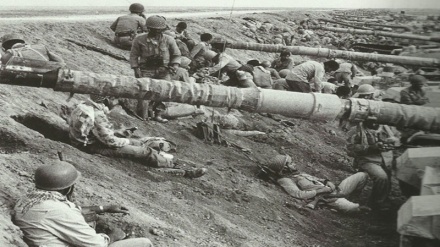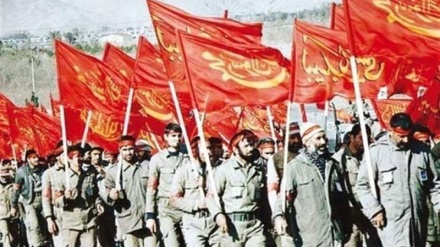Glimpses of Epic of the 8-Year Holy Defense (74)
In last week’s episode of “Glimpses of Epic of 8-Year Holy Defense”, we referred to Operation Karbala-1, five months after Operation Val-Fajr 8 and capturing of the Iraqi region of Faw that turned the tide of the American imposed war in the favour of the Islamic Republic of Iran.
Karbala 1 Operations, in fact completely defeated the new strategy of Saddam to launch offensive in the central sector and reoccupy the city of Mehran, which was immediately liberated by Iran’s Muslim combatants. The speed of action by the Iranian forces shattered the Ba’thist army which suffered over 10,000 casualties, while 1,210 Iraqi soldiers were captured. In addition, 110 tanks, armoured carriers and a large number of other vehicles were destroyed. Iran took as booty 69 tanks and armoured carriers, and over 130 various types of vehicles.
American and other western military experts, some of whom were guiding Saddam, did not expect that the Iranian would be able to retake Mehran, which the Ba’thists had strongly fortified. The Strategic Studies Centre of London said the Iran’s liberation of Mehran and capture of several high-ranking Iraqi army officers, among them the commander of the brigade, has completely demoralized the Ba’thist forces and it was now impossible for them to check the advance of the Iranian forces. Tareq Yuhanna Aziz, who was Iraq’s deputy prime minister as well as foreign minister, appealed to Iraq’s backers to isolate Iran and force it to end the war.
The western media, as usual, resorted to lies and propaganda against Iran.
The British daily ‘Guardian’ wrote: Iraq has withdrawn from the city of Mehran with 2,500 casualties. The BBC, quoting the Iraqi regime said: Mehran's liberation is not a decisive factor in the war. The West encouraged Saddam to launch indiscriminate airstrikes on Iranian towns and cities, as a result of which hundreds of civilians were martyred. Iran, in turn, launched missiles on Iraq’s industrial centres but refrained from attacking residential areas. At the start of the imposed war, the range of the Iraqi airplanes was limited to Khark Island in the Persian Gulf, but with new armaments provided to Saddam by France such as Mirage aircraft and by the Soviet Union which gave him 25 advanced Migs, the range of the Iraqi Army's airstrikes in the Persian Gulf increased to the Strait of Hormuz. For the first time, Iraqi F-1 Mirage aircraft attacked and bombed Isfahan's refinery in mid-summer of 1986. In view of the fact that at that time Iraq had no fuel planes and Mirage planes did not have enough fuel to travel to Isfahan, such an operation represented a major development in the capabilities of the Iraqi Air Force.
Iraq's attacks on the Lark and Siri Islands in the summer of 1986 also signaled a fundamental change in the air force of Iraq and the use of airborne refueling over the Persian Gulf to attack targets deep inside Iran. Extensive efforts were made to stop Iran's oil exports in 1986, while the Saddam regime freely exported its oil through pipelines via Turkey and into Saudi Arabia, as well as through Jordan, without relying on the Persian Gulf. Iraq also started hitting oil tankers in the Persian Gulf carrying Iranian crude. By the end of the war, a total of 500 ships were attacked by Iraq.
A significant portion of Iran's oil tankers and fuel were destroyed, but these cowardly attacks failed to dent the firm resolve of the Islamic Republic to continue the Holy Defence against the aggressors.
Thus, in view of these facts, what Donald Trump is doing now through his policy of economic terrorism against Iran, is not something new. The US and its accomplices in crimes had followed such terroristic policies from the day of the victory of the Islamic Republic and throughout the 8-year Iraqi war and after, in a bid to force Iran into submission, but to no avail.
FK/AS/ME


